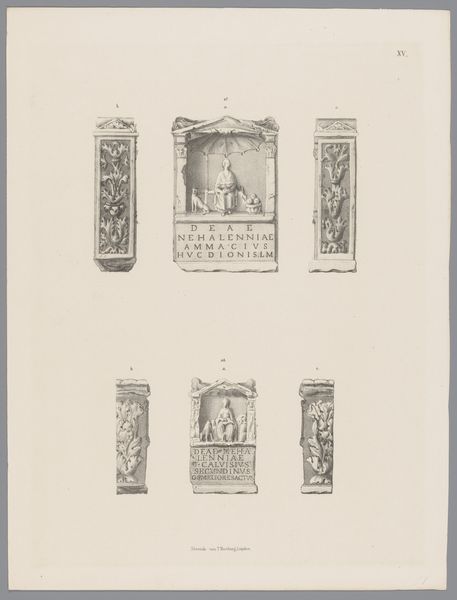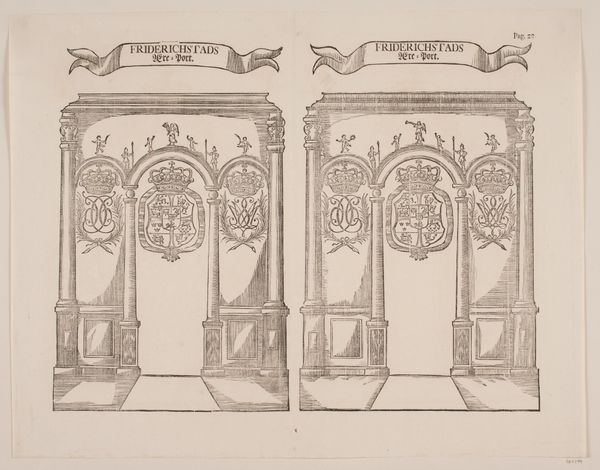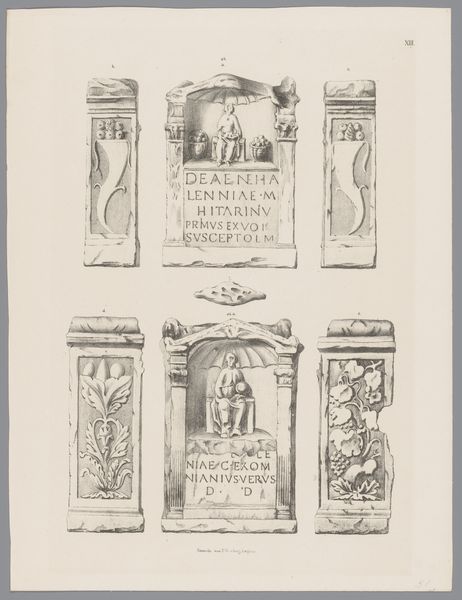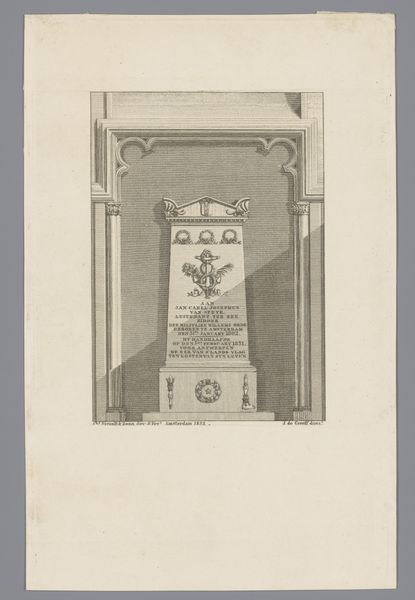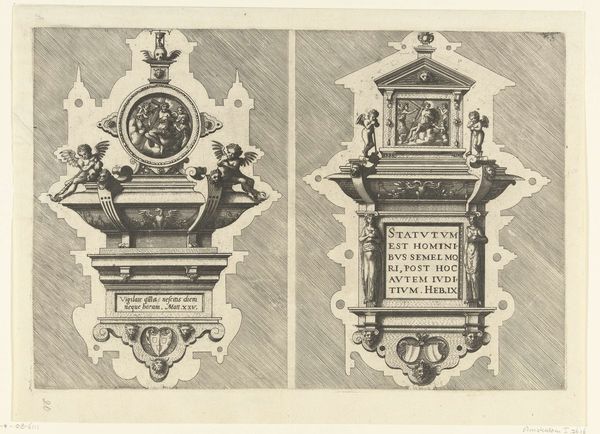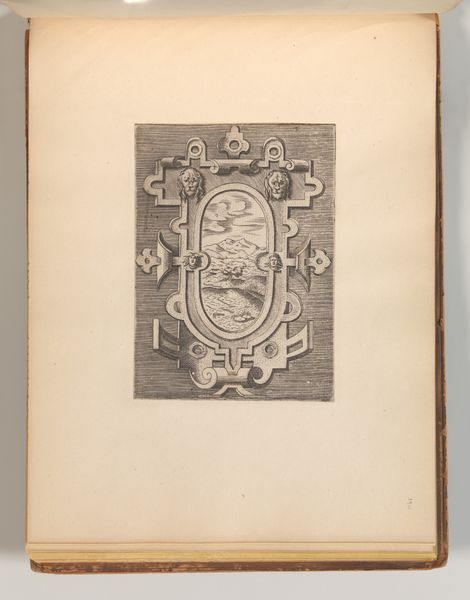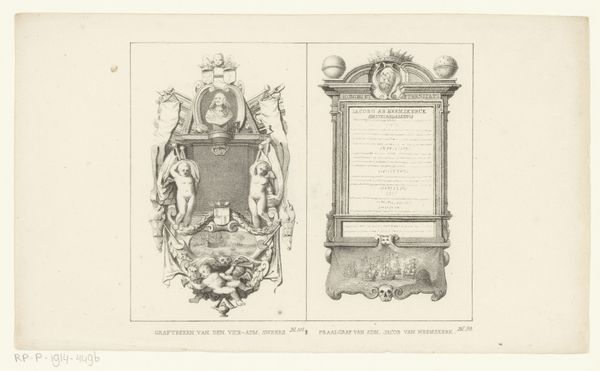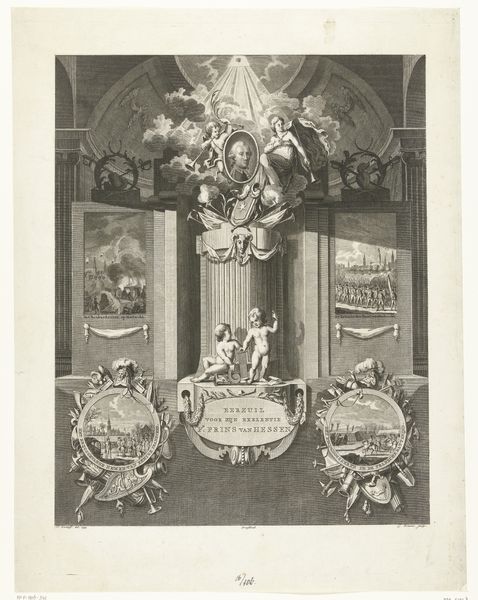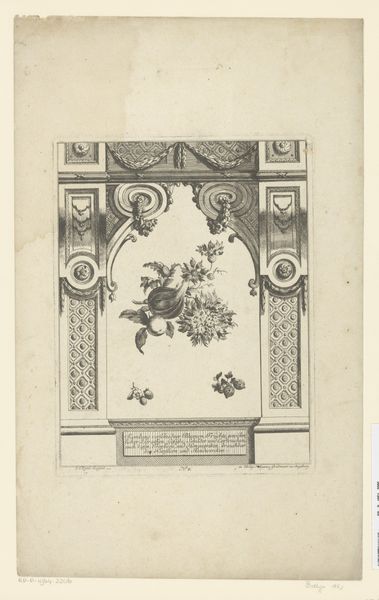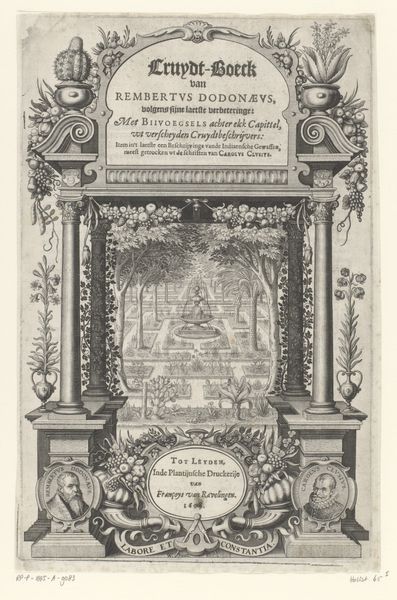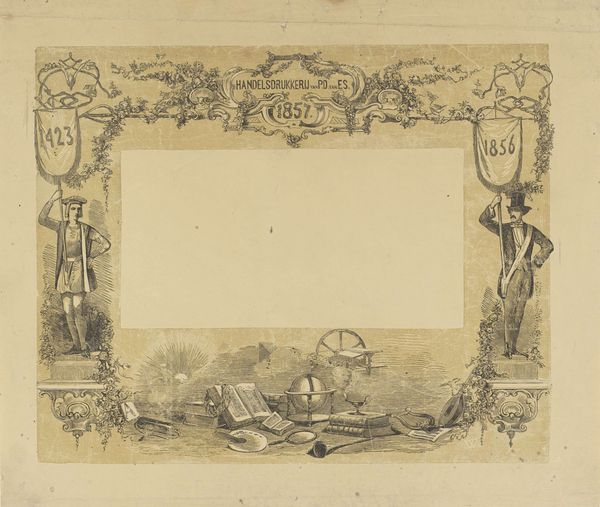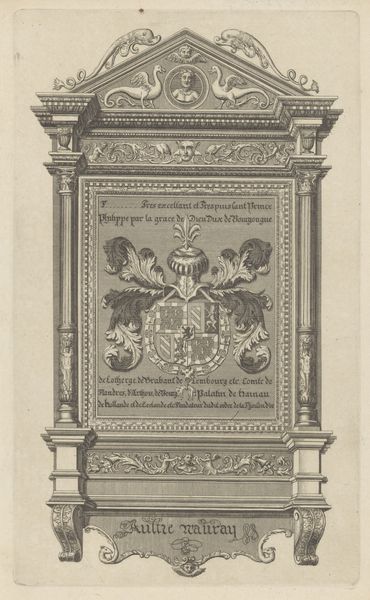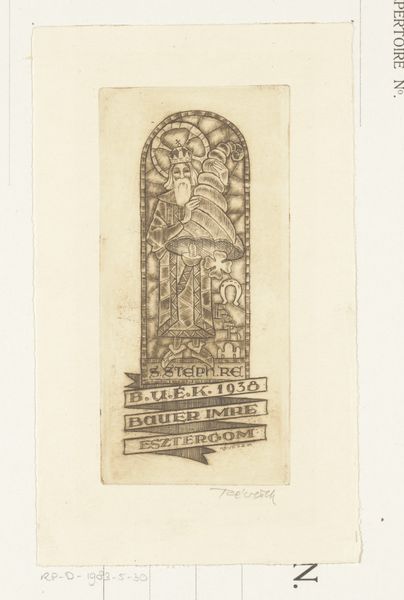
print, engraving, architecture
#
16_19th-century
# print
#
19th century
#
history-painting
#
engraving
#
architecture
Dimensions: height 162 mm, width 270 mm
Copyright: Rijks Museum: Open Domain
Editor: This print, titled "Drie grafmonumenten in de Nieuwe Kerk Amsterdam" presents three grave monuments; it’s from the 19th century, an engraving. The composition feels very formal and rigid, almost like a catalogue. How do you interpret this work, especially considering it depicts monuments? Curator: This image offers us a window into 19th-century Dutch society’s relationship with death, memory, and national identity. Grave monuments were powerful statements, not just about the deceased, but about the values and aspirations of the society that memorialized them. Notice how each monument employs different symbols and architectural styles? This reflects varying social positions and beliefs. How do these structures speak to the power dynamics inherent in commemoration? Editor: That's interesting; I hadn’t considered the social statement aspect. I guess I saw them more as records of history. So the placement in a church then becomes also a signifier? Curator: Precisely! The New Church in Amsterdam, the site for these memorials, wasn't just any church, but also the coronation church. The monuments aren't merely markers of individual lives, they're strategically placed markers within a complex web of religious, political, and national narratives. Think about the act of preserving this as a print too, not only did you visit in person, but purchased a print after. Why do you think someone would be interested in buying a print depicting these monuments? Editor: I guess the print is more portable, less elite; available to a wider audience. And now I see how the choice of who is memorialized, and how, reflects deeper power structures of the time. I hadn't considered the church's specific importance and how it connects to power. Curator: And hopefully, this conversation has shifted our understanding from viewing them as static historical markers to understanding them as active participants in shaping historical and cultural narratives.
Comments
No comments
Be the first to comment and join the conversation on the ultimate creative platform.
